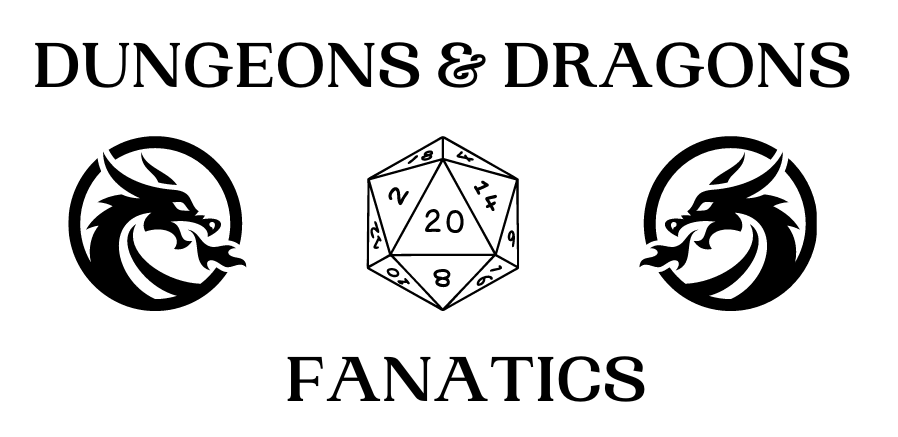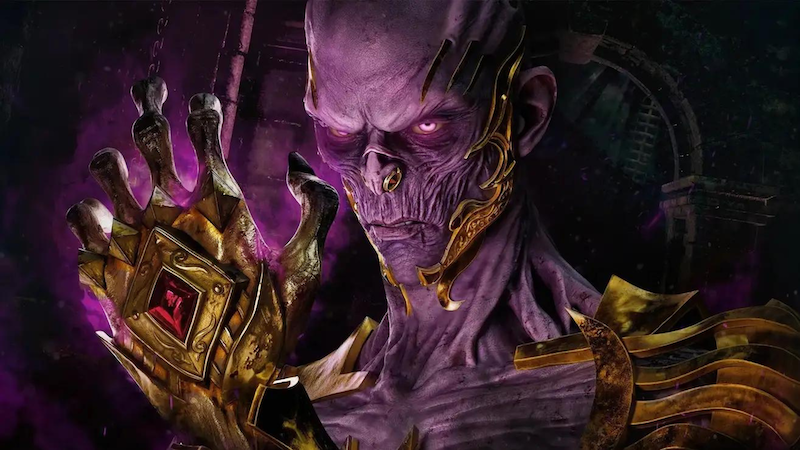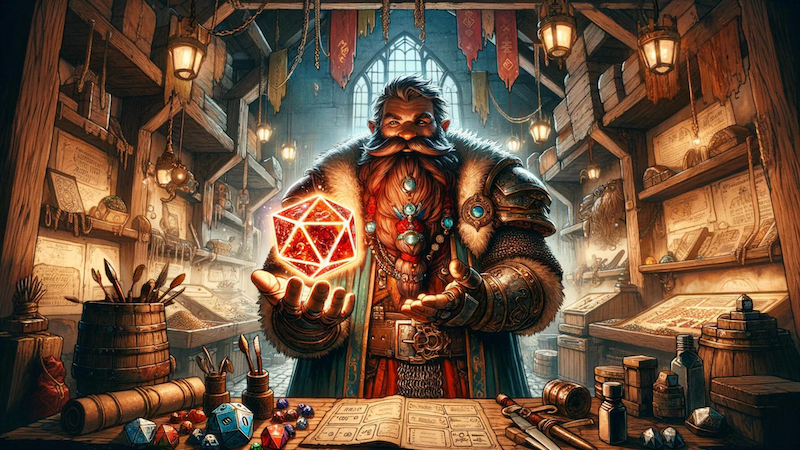

The Fighter: DnD 5e Class Guide (Updated May 2024)
As an Amazon Associate I earn from qualifying purchases.
Amidst the clash of weapons and the screams of the dying, Sir Galen stood resolute, one of the few remaining defenders left to face the goblin horde. His armor battered, his sword slick with gore, he braced for another assault from the army of shrieking creatures. With a defiant roar, he met the surging tide of battle, the world dissolving into a blur of blood and steel.
Table of Contents
- What is a Fighter in DnD 5e?
- What is a Fighter’s primary ability score?
- What is a Fighter’s hit die and hit points?
- What are Fighters proficient in?
- What equipment do Fighters start with?
- What unique features do Fighters have?
- What are the Fighter subclasses?
- What species are best for Fighters?
- How do you roleplay a Fighter?
- What DnD 5e sourcebooks do Fighters appear in?


What is a Fighter in DnD 5e?
Skilled in the endless forms of combat, Fighters remain one of the most popular and recognizable DnD 5e classes. As masters dedicated to the art of war, Fighters are also as varied and unique as the weapons they use, ranging from noble knights and deadly duelists to expert marksmen and arcane warriors who blend might and magic to bloody effect.
Unlike other martial classes, such as Paladins (who blend might and magic) and Barbarians (whose combat abilities are fuelled largely by Rage), Fighters are generally considered far more versatile and are popular class for both new and experienced players alike. And while they are often viewed as being less complex than other classes (particularly in terms of magic users), they are also far more flexible in terms of both character builds and roleplaying potential.
Below is the Fighter class table, detailing their proficiency bonuses and key features.
| Fighter Class Table | ||||
|---|---|---|---|---|
| Level | Proficiency Bonus | Features | ||
| 1st | +2 | Fighting Style, Second Wind | ||
| 2nd | +2 | Action Surge (x1) | ||
| 3rd | +2 | Martial Archetype | ||
| 4th | +2 | Ability Score Improvement | ||
| 5th | +3 | Extra Attack (x1) | ||
| 6th | +3 | Ability Score Improvement | ||
| 7th | +3 | Martial Archetype feature | ||
| 8th | +3 | Ability Score Improvement | ||
| 9th | +4 | Indomitable (x1) | ||
| 10th | +4 | Martial Archetype feature | ||
| 11th | +4 | Extra Attack (x2) | ||
| 12th | +4 | Ability Score Improvement | ||
| 13th | +5 | Indomitable (x2) | ||
| 14th | +5 | Ability Score Improvement | ||
| 15th | +5 | Martial Archetype feature | ||
| 16th | +5 | Ability Score Improvement | ||
| 17th | +6 | Action Surge (x2), Indomitable (x3) | ||
| 18th | +6 | Martial Archetype feature | ||
| 19th | +6 | Ability Score Improvement | ||
| 20th | +6 | Extra Attack (x3) | ||


What is a Fighter’s Primary Ability Score?
Fighters are unique in that both Strength and Dexterity are their primary ability scores. Your character must have either a Strength or Dexterity of 13 or higher to play a Fighter or to multiclass as one. This reflects the class’ focus on combat, either using brute strength to batter foes or using dextrous strikes to incapacitate enemies.
The higher your Strength or Dexterity score, the more adept you are in battle. This is particularly important at higher levels as it directly influences new fighting abilities and options.
Notably, Fighters also gain a saving throw proficiency in Constitution, which reflects their role as frontline combatants who are able to withstand more punishment that most other classes.


What is a Fighter’s Hit Die and Hit Points?
Fighters have 1D10 hit dice per level. This mean at 1st Level your Fighter’s hit points will be 10 + your Constitution modifier. Each level you advance from Level 2 onwards, you gain an additional 1D10 (or an average of 6) Hit Points, plus your Constitution modifier.
This high Hit Dice makes Fighters one of the more resilient classes (for context, most spellcasters have either 1D6 or 1D8 hit dice), with the only DnD 5e Barbarian (with its hefty 1D12 hit dice) being able to withstand more punishment during combat, exploration and encounters.


What are Fighters Proficient In?
Fighters have a unique set of skills that reflect their ability as seasoned warriors.
- Armor: All armor, shields
- Weapons: Simple weapons, martial weapons
- Tools: None
- Saving Throws: Strength and Constitution
- Skills: Choose two skills from Acrobatics, Animal Handling, Athletics, History, Insight, Intimidation, Perception and Survival


What Equipment Do Fighters Start With?
As a Level 1 Fighter, you begin your adventures with the following equipment, in addition to any equipment provided by your background:
- Chain mail or leather, longbow and 20 arrows
- A martial weapon and a shield or two martial weapons
- A light crossbow and 20 bolts or two handaxes
- A dungeoneer’s pack or an explorer’s pack


What Unique Features Do Fighters Have?
As a Fighter, you’re able to access a number of unique Features that reflect your skill in the art of combat.
- Fighting Style: You adopt a unique fighting style. Notably, you can’t take a Fighting Style more than once.
- Archery: You gain a +2 bonus to attack rolls you make with ranged weapons.
- Blind Fighting: You can see anything within 10 feet that isn’t behind total cover, even if you’re blinded or in darkness. You can also invisible creatures if they have not completed a successful hide action.
- Defense: While you are wearing armor, you gain a +1 bonus to your AC.
- Dueling: When you are wielding a melee weapon in one hand and no other weapons, you gain a +2 bonus to damage rolls with that weapon.
- Great Weapon Fighting: When you roll a 1 or 2 on a damage die for an attack you make with a versatile two-handed melee weapon, you can re-roll the die. You must use the new roll, even if the new roll is a 1 or a 2.
- Interception: When a creature you can see hits a target (other than you) within 5 feet of you, you can use your reaction to reduce the damage the target takes by 1d10 + your proficiency bonus (to a minimum of 0 damage). You must be wielding a shield or a simple or martial weapon to use this reaction.
- Protection: When a creature you can see attacks a target (other than you) that is within 5 feet of you, you can use your reaction to impose disadvantage on the attack roll. You must be wielding a shield.
- Superior Technique: You learn one maneuver of your choice from the options available to the Battle Master archetype (see Fighter Subclasses below). If a maneuver you use requires your target to make a saving throw to resist the maneuver’s effects, the saving throw DC equals 8 + your proficiency bonus + your Strength or Dexterity modifier (your choice.) You gain one superiority die, which is a D6 used to fuel your maneuvers. A superiority die is expended when you use it. You regain your expended superiority dice when you finish a short or long rest.
- Thrown Weapon Fighting: You can draw a weapon that has the thrown property as part of the attack you make with the weapon. In addition, when you hit with a ranged attack using a thrown weapon, you gain a +2 bonus to the damage roll.
- Two-Weapon Fighting: When you engage in two-weapon fighting, you can add your ability modifier to the damage of the second attack.
- Unarmed Fighting: Your unarmed strikes deal bludgeoning damage equal to 1D6 + your Strength modifier. If you aren’t wielding any weapons or a shield when you attack, the D6 becomes a D8. At the start of each of your turns, you can also deal 1D4 bludgeoning damage to one creature grappled by you.
- Second Wind: On your turn, you can use a bonus action to regain hit points equal to 1D10 + your fighter level. You must finish a short or long rest before you can use this feature again.
- Action Surge: At 2nd level, you can take one additional action. Once you use this feature, you must finish a short or long rest before you can use it again. Starting at 17th level, you can use this Feature twice before a rest. You can, however, only use the Feature once per turn.
- Extra Attack: Beginning at 5th level, you can attack twice whenever you take the Attack action on your turn. The number of attacks increases to three when you reach 11th level in and to four when you reach 20th level.
- Indomitable: At 9th level, you can re-roll a saving throw that you failed. You must use the new roll and you can’t use this feature again until you finish a long rest. You can use this feature twice between long rests starting at 13th level and three times between long rests starting at 17th level.


What are the Fighter Subclasses?
Currently, there are 10 official Fighter subclasses for DnD 5e (known as a “Martial Archeytpes”), each of which offers a range of different combat styles and abilities. As a Fighter, you choose your Martial Archetype subclass at Level 3.
- Arcane Archer: You infuse your arrows with magical properties, using arcane elvish magic to create a variety of special effects. This subclass allows you to choose from magical arrow types that can entangle, banish or even strike hidden targets.
- Battle Master: You are a master of combat techniques and tactics, using maneuvers to outsmart and defeat your enemies. This subclass grants you abilities to enhance your attacks, control the battlefield and provide tactical advantages to your allies.
- Cavalier: You excel in mounted combat and are dedicated to protecting others, especially when riding your steed. This subclass boosts your effectiveness while mounted and on foot, focusing on defensive tactics and controlling enemies to protect your allies.
- Champion: You focus on refining your martial prowess, becoming a formidable warrior. This subclass enhances your ability to land critical hits more often and increases your physical capabilities, making you a relentless fighter.
- Echo Knight: You manipulate time and space to summon an echo of yourself from a parallel dimension. This subclass allows you to fight from multiple positions, attack from a distance with your echo, and even swap places with it for strategic maneuvers.
- Eldritch Knight: You blend martial prowess with magical ability, casting spells while also engaging in hand-to-hand combat. This subclass allows you to summon weapons, cast protective spells, and use magic to enhance your combat effectiveness.
- Psi Warrior: You harness the power of your mind to augment your fighting capabilities. This subclass provides you with psionic energy that you can use to shield yourself, move objects, or strike enemies with telekinetic force.
- Purple Dragon Knight: You inspire and lead others in battle, focusing on teamwork and camaraderie. This subclass allows you to extend the benefits of your fighting spirit to your allies, boosting their morale and combat abilities.
- Rune Knight: You use mystical runes to enhance your combat skills and manipulate various magical effects. This subclass allows you to inscribe runes onto your equipment, granting you and your allies enhanced abilities, protection, or offensive power.
- Samurai: You are a warrior who combines fierce determination with meticulous skill. This subclass provides you with bonuses to accuracy, the ability to withstand damage, and a resolute will that can keep you fighting even when severely wounded.
NOTE: There is also an additional Fighter subclass known as the Gunslinger which was created by Matt Mercer for use with third-party Critical Role content. While it is available on D&D Beyond, it is not part of the official DnD 5e subclasses.


What DnD 5e Species are Best for Fighters?
While Fighters come from all species, in general choosing one that enhance your Strength or Dexterity scores are seen as the best option. This includes:
- Mountain Dwarf: Mountain Dwarves receive a +2 bonus to both Strength, directly boosting a Fighter’s combat prowess and resilience.
- Human: The ability to increase any ability score by 1 makes Humans extremely versatile as Fighters. They can tailor their build to be more focused on Strength, Dexterity or even Constitution.
- Half-Orc: Half-Orcs gain a +2 to Strength and a +1 to Constitution, which are key stats for any Fighter. Their Relentless Endurance and Savage Attacks traits also make them perfect as frontline combatants.
- Dragonborn: With a +2 bonus to Strength and a +1 to Charisma, Dragonborn are naturally strong Fighters. Their Breath Weapon also provides an additional attack option.
- Goliath: Goliaths can potentially receive a +2 to Strength and a +1 to Constitution, making them naturally formidable Fighters. Their Stone’s Endurance trait allows them to shrug off incoming damage once per rest, enhancing their durability in prolonged fights.


How Do You Roleplay a Fighter?
Fighters are arguably one of the most versatile classes in terms of roleplaying potential, as they encompass countless backgrounds, cultures and personas. While you should always consider your character’s background and goals, here are a few ideas to get you started:
- Veteran Soldier: A seasoned commander of numerous battles, you use tactical acumen and leadership to dominate the battlefield. Your military experience makes you invaluable in combat, but also guides you approach to the world and people around you.
- Gladiator Champion: Thriving in the spectacle of arena combat, you are as much a performer as you are a warrior. Your flashy combat style and charisma make you a favorite among crowds and a nightmare for opponents in one-on-one duels.
- Knight Errant: Bound by chivalry and driven by a quest, you roam the land seeking to prove your worth through deeds of valor. Your honor is your life and your sword defends the helpless and punishes the wicked.
- Weapon Master: Obsessed with martial perfection, you have trained extensively with a variety of weapons. This dedication has made you incredibly versatile and dangerous, capable of adapting to any combat scenario.
- Naval Raider: At home on the high seas, you excel in ship-to-ship battles and boarding actions. Your ability to fight on the rocking decks of ships makes you a valuable leader among pirates or naval forces.
- Urban Duelist: Navigating the complex social and physical landscape of city life, you excel in close-quarters combat and rooftop chases. Your agility and quick thinking make you a skilled fighter in urban environments.
- Exotic Weapon Specialist: Fascinated by unusual and foreign weapons, you have trained with tools most consider impractical. This unique arsenal surprises and confounds your enemies, giving you an edge in unpredictability.


What DnD 5e sourcebooks do Fighters appear in?
While Fighters are one of the original classes to appear Dungeons & Dragons, they have evolved over the decades. Below are the specific DnD 5e sourcebooks which govern their rules:
- Player’s Handbook: Includes base Fighter class, plus the Champion, Battle Master and Eldritch Knight. Also includes the Fighting Styles of Archery, Defence, Dueling, Great Weapon Fighting, Protection and Two-weapon Fighting.
- Sword Coast Adventurer’s Guide: Purple Dragon Knight.
- Xanathar’s Guide to Everything: Arcane Archer, Cavalier and Samurai.
- Explorer’s Guide to Wildemount: Echo Knight.
- Tasha’s Cauldron of Everything: Psi Warrior and Rune Knight. Also includes the Fighting Styles of Blind Fighting, Interception, Superior Technique, Thrown Weapon Fighting and Unarmed Fighting.
More D&D News Coverage
For more from the world of Wizards of the Coast, visit our D&D News page.







